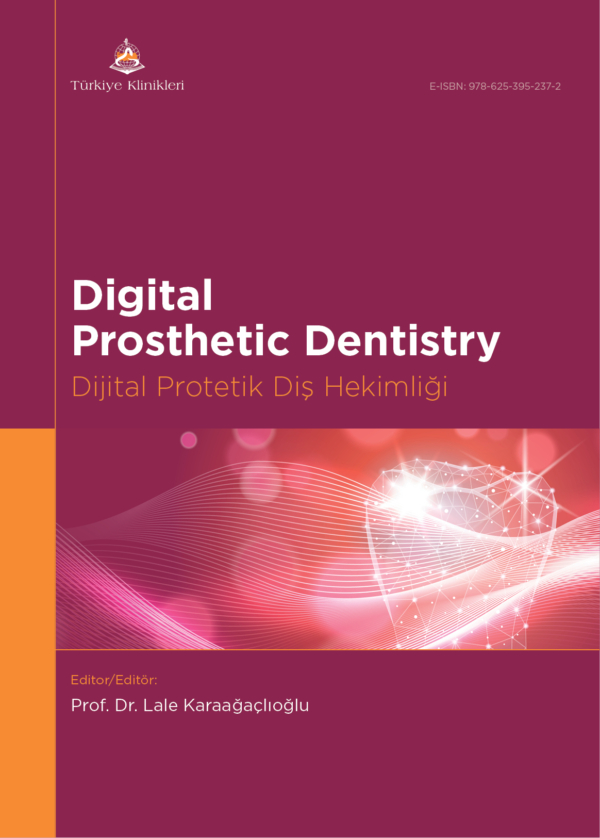Digital scanners, which assist in creating digital models by scanning the teeth inside the mouth to generate three-dimensional models, are essential devices in digital dentistry. The use of digital scanners facilitates dentists in making accurate diagnoses and developing treatment plans. Dentists can inform their patients about the procedures to be performed by utilizing three-dimensional models, thereby facilitating communication.
The purpose of writing this book is to first provide dentists with knowledge based on this book and then to evaluate which parameters they can use for treatment purposes, thus charting a roadmap for their applications.
In the world of digital dentistry, workflows are streamlined by computer-aided milling (CAD/CAM subtractive manufacturing systems) or additive manufacturing, minimizing the time required for clinical adaptation. Additive manufacturing technology is an innovative ap-proach in dentistry, relying on computer-aided design for the layer-by-layer production of objects.
Both technologies reduce treatment time by enabling rapid design and manufacturing, allowing for same-day delivery of restorations. Despite the initial investment costs, these methods, which can be used in various disciplines of dentistry, provide long-term savings due to streamlined processes and reduced manual labor. Finally, automation eliminates errors, increases efficiency, and allows focus on patient care.
Readers will gain detailed knowledge about the characteristics of digital systems, ranging from examining jaw movements digitally to color selection in prosthetic restorations, cover-ing a wide range of applications from fixed prostheses to removable prostheses.
Digital dentistry improves the production of dental prostheses, especially fixed prostheses, by enhancing accuracy, speed, cost efficiency, and overall workflow acceleration. From the perspective of removable prostheses, the digital approach is a significant step in reducing costs, decreasing the number of appointments, and providing comfortable treatment, especial-ly for elderly patients.
I sincerely thank all my dedicated and expert colleagues whose contributions were vital in making this publication possible. It is our greatest desire that this compilation serves as a guiding source of information towards excellence in the field of digital dentistry and supports progress in dental education.
Bölümler
Digital Impression Technologies in Dentistry: Intraoral Scanners and Desktop Scanners
Hande Gültekin, Elif Tuba Akçin
Types of Fixed Restorations in Digital Prosthodontics
Mehmet Esat Başol
Extended Reality Systems in Dental Education and Clinical Practice
Dilara Gülmez, Nazire Esra Özer
Additive Manufacturing Methods Used in Digital Prosthetic Dentistry
Gökçe Bulut, Gökhan Çiçekci
Subtractive Manufacturing Systems
Ali Enes Özcan, Hamiyet Güngör Erdoğan
Digital Ja Trw acking Systems
Mevsim Yayman
Usage of Digital Systems in Color Selection of Prosthetic Restorations
Zeynep İrkeç
Digital Approaches in Complete Denture Applications
Bilge Çokoy, Zeynep Şahin



